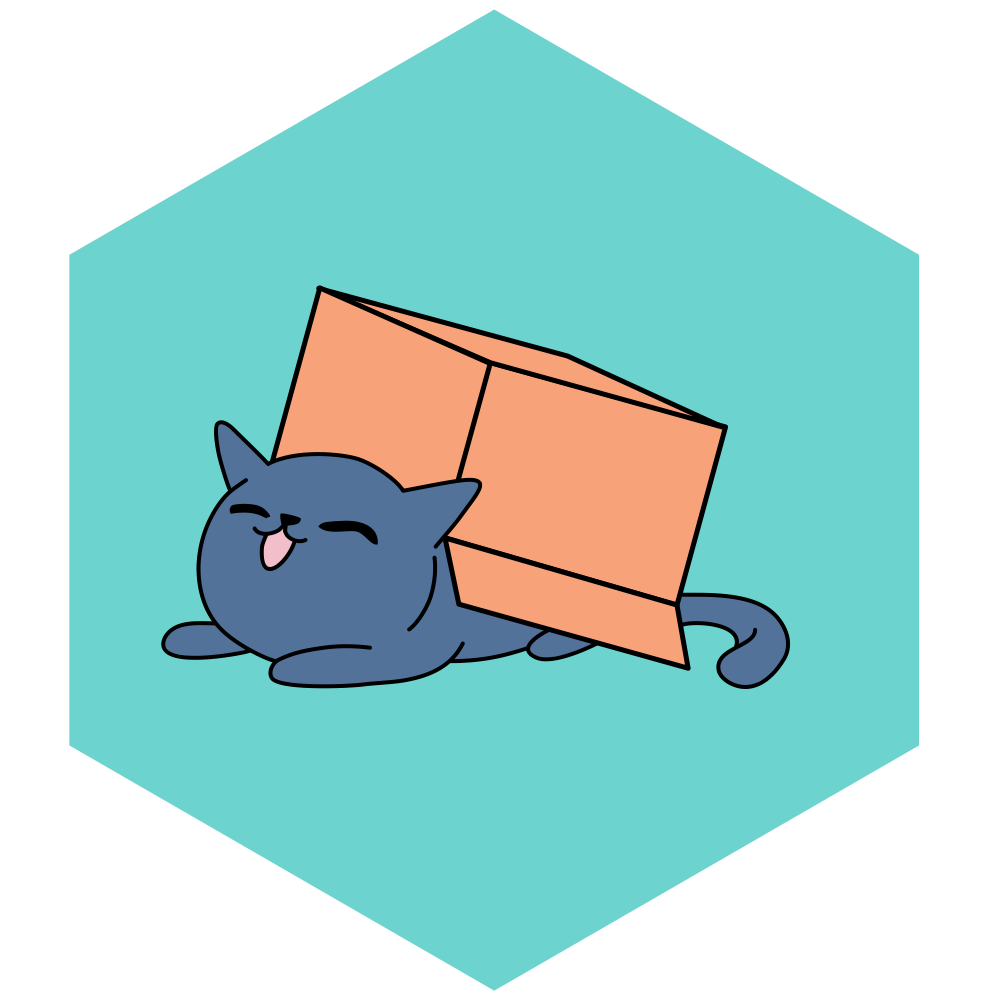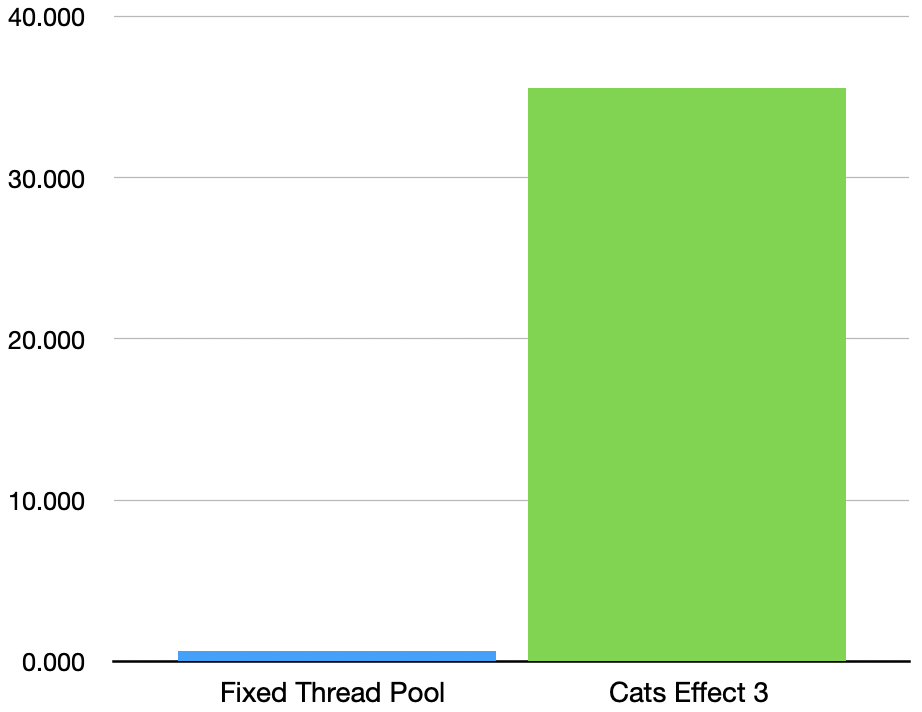typelevel / Cats Effect
Programming Languages
Labels
Projects that are alternatives of or similar to Cats Effect
Cats Effect

Cats Effect is a high-performance, asynchronous, composable framework for building real-world applications in a purely functional style within the Typelevel ecosystem. It provides a concrete tool, known as "the IO monad", for capturing and controlling actions, often referred to as "effects", that your program wishes to perform within a resource-safe, typed context with seamless support for concurrency and coordination. These effects may be asynchronous (callback-driven) or synchronous (directly returning values); they may return within microseconds or run infinitely.
Even more importantly, Cats Effect defines a set of typeclasses which define what it means to be a purely functional runtime system. These abstractions power a thriving ecosystem consisting of streaming frameworks, JDBC database layers, HTTP servers and clients, asynchronous clients for systems like Redis and MongoDB, and so much more! Additionally, you can leverage these abstractions within your own application to unlock powerful capabilities with little-or-no code changes, for example solving problems such as dependency injection, multiple error channels, shared state across modules, tracing, and more.
Getting Started
- Tired: 2.3.3
- Wired: 3.0.0-RC2
libraryDependencies += "org.typelevel" %% "cats-effect" % "2.3.3"
The above represents the core, stable dependency which brings in the entirety of Cats Effect. This is most likely what you want. All current Cats Effect releases are published for Scala 2.12, 2.13, 3.0.0-M2 and M3, and ScalaJS 1.4.x.
If you are using Cats Effect 3, then you may want to consider one of the several other modules which are made available within that release. If you're a datatype implementor (like Monix), you probably only want to depend on kernel (the typeclasses) in your compile scope and laws in your test scope:
libraryDependencies ++= Seq(
"org.typelevel" %% "cats-effect-kernel" % "3.0.0-RC2",
"org.typelevel" %% "cats-effect-laws" % "3.0.0-RC2" % Test)
If you're a middleware framework (like fs2), you probably want to depend on std, which gives you access to Queue, Semaphore, and much more without introducing a hard-dependency on IO outside of your tests:
libraryDependencies ++= Seq(
"org.typelevel" %% "cats-effect-std" % "3.0.0-RC2",
"org.typelevel" %% "cats-effect" % "3.0.0-RC2" % Test)
You may also find some utility in the testkit and kernel-testkit projects, which contain TestContext, TimeT, generators for IO, and a few other things:
libraryDependencies += "org.typelevel" %% "cats-effect-testkit" % "3.0.0-RC2" % Test
Cats Effect provides backward binary compatibility within the 2.x and 3.x version lines, and both forward and backward compatibility within any major/minor line. This is analogous to the versioning scheme used by Cats itself, as well as other major projects such as ScalaJS. Thus, any project depending upon Cats Effect 2.2.1 can be used with libraries compiled against Cats Effect 2.0.0 or 2.2.3, but not with libraries compiled against 2.3.0 or higher.
Binary compatibility for a given set of release candidates (e.g. 3.0.0-RC1, 3.0.0-RC2, etc) is provided on a best-effort basis. It is the intention that no breaking changes are introduced within a release candidate cycle, but exceptions may be made for high priority changes.
Hello, World
import cats.effect._
object Main extends IOApp.Simple {
val run = IO.println("Hello, World!")
}
Or, if you need the ability to take arguments and return exit codes:
import cats.effect._
object Main extends IOApp {
def run(args: List[String]): IO[ExitCode] =
if (args.headOption.map(_ == "--do-it").getOrElse(false))
IO.println("I did it!").as(ExitCode.Success)
else
IO.println("Didn't do it").as(ExitCode(-1))
}
Five Simple Rules
Any program written using Cats Effect provides incredibly strong guarantees and powerful functionality, performance, safety, and composability, provided you follow each of the following rules:
-
Wrap all side-effects in
delay,async,blocking, orinterruptible- (pro tip: try to keep the size of your
delayblocks small; twodelays with aflatMapis much better than one bigdelay)
- (pro tip: try to keep the size of your
-
Use
bracketorResourcefor anything which must beclosed -
Never hard-block a thread outside of
blockingorinterruptible -
Use
IOAppinstead of writing your owndef main - Never call anything that has the word
unsafein the name
If you follow these rules, and you use libraries and frameworks which also follow these rules, you will get a truly astonishing array of things essentially for free:
- Extremely high performance, elastic, and scalable applications
- Proven backpressure mechanisms under extreme load in real deployments
- Reliable resource safety in all cases
- Aggressive interruption of unnecessary work (e.g. timeouts), automatically, without any extra implementation effort
- Composable and modular application architecture (real, practical functional programming)
- Simple, safe, and incredibly powerful concurrency mechanisms that get faster under high contention
- Highly tuned application runtime with optimized threading and memory management semantics
- Powerful and orthogonal abstractions which enable architectural decomposition that scales to any problem space
- Access to an entire ecosystem of uniquely powerful libraries and tooling
- …and so much more
Performance

Most functional and async frameworks will tout their performance on synthetic microbenchmarks, measuring things like how many flatMaps they can evaluate per microsecond and so on. However, most programs aren't just a bunch of flatMaps, and the true performance bottlenecks are usually in things like contention scaling under high load, memory and other resource management, backpressure, page faults, and such. In these areas, Cats Effect is truly unrivaled on the JVM, and in most cases, applications written in a purely functional style using Cats Effect will exceed the performance and elasticity of the same applications written in an imperative style.
The chart to the right shows the results of a synthetic benchmark simulating an extremely high-contention scheduling scenario. The scenario is typical of something like a microservice handling extremely high requests-per-second, with each request representing some sort of scatter/gather semantic in which many complex asynchronous actions must be taken in parallel to produce a timely response.
The benchmark measures the performance of a typical "disruptor pattern" application written using a fixed thread pool (from java.util.concurrent.Executors) compared to the same workflow implemented using Cats Effect (specifically version 3.0). The scores are not a typo: Cats Effect is almost 55x faster than the typical disruptor-style, hand-tuned implementation. Similarly dramatic results are consistently observed when comparing Cats Effect with other popular asynchronous and functional frameworks.
As always, benchmarks are one thing, and your application is its own special snowflake with its own performance profile. Always measure and test your application before assuming that someone else's performance results apply in your use-case. When in doubt, come talk with us and we'll give you an honest opinion!
Abstraction
Cats Effect isn't just designed to enable high performance applications with out-of-the-box safety and elasticity under load. It was intended first and foremost as a tool for implementing composable and reasonable software that is easy to write, easy to test, and easy to evolve as your team and requirements change over time. To achieve this goal, Cats Effect embraces and enables strong, typeful, purely-functional programming styles that are uniquely tailored for the Scala language.
The typical Cats Effect system is often built in terms of simple, orthogonal, primitive capabilities which come together to represent all the expressive power necessary to encode a modern asynchronous runtime. Much like how the rules of addition, multiplication, and integers come together to define much of what we understand about basic arithmetic, so too do the rules of Functor, Monad, and Concurrent come together to define the nature of a program which has all the capabilities you need.
By learning and leveraging these capabilities directly, it is possible to write functions and classes which clearly state their requirements and capabilities in a statically typed and discoverable fashion, improving documentation, readability, and separation of concerns.
And, just as with arithmetic, even when you don't directly leverage the nature of abstract mathematics in your daily life, those laws are still present shaping the world around you and enabling powerful and surprising things like computers and trains and restaurant menus. The laws and abstractions of Cats Effect support a powerful and unique ecosystem of frameworks, giving you access to rich and advanced functionality unparalleled in any language or ecosystem, battle tested in production environments ranging from some of the largest companies in the world to some of the nimblest startups.
Contributing
There's always lots to do! This is an incredibly exciting project used by countless teams and companies around the world. Ask in the Gitter channel if you are unsure where to begin, or check out our issue tracker and try your hand at something that looks interesting! Please note that all of the Cats Effect maintainers are, unfortunately, extremely busy most of the time, so don't get discouraged if you don't get a response right away! We love you and we want you to join us, we just may have our hair on fire inside a melting production server at the exact moment you asked.
Cats Effect is built with sbt, and you should be able to jump right in by running sbt test. I will note, however, that sbt +test takes about two hours on my laptop, so you probably shouldn't start there...
We use a typical pull request workflow, with automated builds run within GitHub Actions.
Tool Sponsorship
 Development of Cats Effect is generously supported in part by YourKit through the use of their excellent Java profiler.
Development of Cats Effect is generously supported in part by YourKit through the use of their excellent Java profiler.
License
Copyright 2017-2021 Typelevel
Licensed under the Apache License, Version 2.0 (the "License");
you may not use this file except in compliance with the License.
You may obtain a copy of the License at
http://www.apache.org/licenses/LICENSE-2.0
Unless required by applicable law or agreed to in writing, software
distributed under the License is distributed on an "AS IS" BASIS,
WITHOUT WARRANTIES OR CONDITIONS OF ANY KIND, either express or implied.
See the License for the specific language governing permissions and
limitations under the License.


